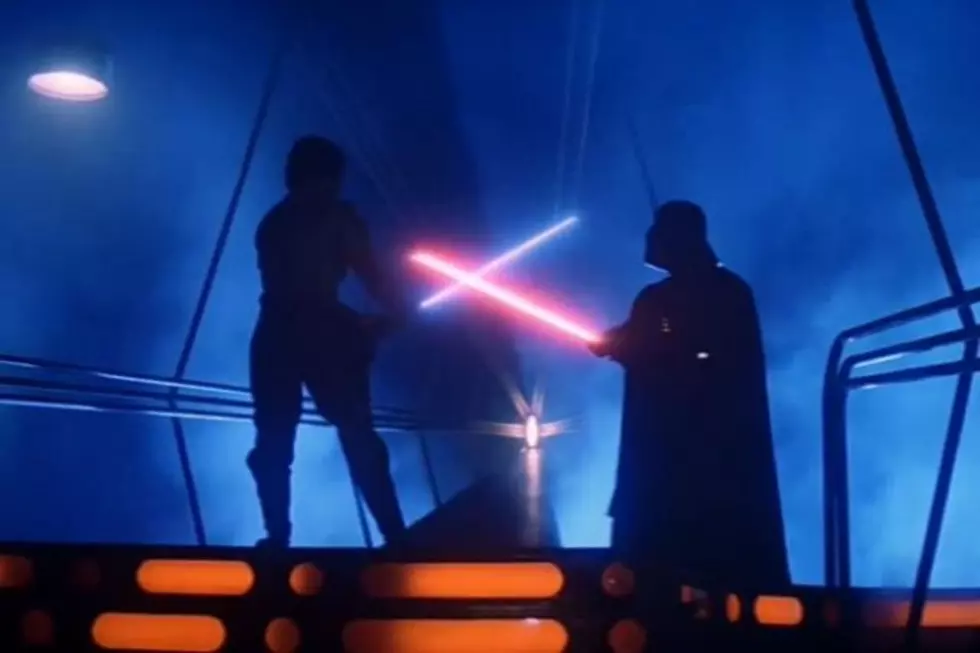
The Force is Strong as Scientists Bring the World One Step Closer to Lightsaber Technology
A collective "nerdgasm" was felt around the world yesterday as reports surfaced of the breakthrough created by scientists from Harvard and MIT.
Growing up a Star Wars fan, there was nothing cooler to me than the lightsabers used by Luke Skywalker and Darth Vader. I mean, it was a sword made of light, how awesome is that? My brother and I would often use sticks, bats, or whatever we could find to wage lightsaber battles with each other until one of us quit after getting cracked in the knuckles one too many times. Even now as a dad who wisely exposed his son to the Star Wars universe, my son and I will duel using the plastic toy version of the best science fiction weapon ever created until I quit because he hits me across the knuckles one too many times. Some things never change I suppose.
Anyway, the days of pretending a broken tree limb is actually a crucial tool in a war between good and evil that spans across the cosmos may be coming to an end thanks to some really smart people who figured out a way to bond light molecules together. Hang on, things are about to get nerdy.
Obviously with anything scientific, there's a ton of big words and long explanations that common folk like you and I don't understand, so here's the (very) basic premise:
Until now, the concept of a lightsaber has always been nothing more than fantasy because light is made up of subatomic particles called photons. These teeny-tiny particles have no detectable mass, so they don't stick together. This prevents them from stopping which, until this little discovery, meant there was no way to get them to form into an unassisted shape, like say a sword. Point two flashlights at each other and what happens? Nothing. No ball of mass begins to form in the middle, and the light certainly does just stop three feet away from the source because the photons pass right through each other, like Mexican food and my stomach.
What these scientists were able to do was essentially change the way protons behave by causing them to stick together and create "light-matter", a concept that previously only existed in theory.
So what form of witchcraft did they concoct to make this possible? Long story short (and really oversimplified), they filled a vacuum with atoms of the metallic element, rubidium and cooled them to absolute zero (-450 Fahrenheit) to slow them down to point where they essentially stood still. They then introduced photons to the mix. The absence of air caused the photons to travel at less than the speed of light and act like normal elements, to the point where they bounced off the rubidium and stick together.
Still with me?
So how soon will it be before we can swing by Wal-Mart and grab a lightsaber from the Sporting Goods section (for hunting purposes, of course)? Quite a while, if ever. While this is a huge discovery in the science world, the reaction took place on a microscopic scale. There's still that whole issue of getting them to form into an actual shape with out the aid of some type of container.
So why is it such a big deal? The people behind the experiment say the results could be used to create super computers known as quantum computers, and with some additional research and tinkering, they may be able to form light crystals.
Like most Star Wars fans, I'll still hold out hope that someone, somewhere, at sometime will figure out a way to make a real-life lightsaber. Then I'll just have to decide which side of The Force I'll want to join. Chances are it will be the one with the better health plan.
[Source: CNN]
More From WDKS-FM





![Louie Smiles in Every Photo Because He’s a Hap-Hap-Happy Boy! [Warrick Humane Society Pet of the Week]](http://townsquare.media/site/74/files/2024/04/attachment-LOUIE-WHS.jpg?w=980&q=75)



